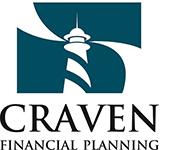RRIFs by Craven Financial Planning
Discover how a Registered Retirement Income Fund (RRIF) in Canada can help you manage your retirement income.
- Home
- RRIFs by Craven Financial
Grow Your Savings
With tax-deferred growth on your retirement funds, a Registered Retirement Income Fund (RRIF) is an essential tool for managing retirement income. RRIFs allow you to continue growing your investments while withdrawing funds to support your lifestyle. Whether you’re converting an RRSP or managing other retirement assets, a RRIF provides flexibility and control over how and when you withdraw your savings.
Common Questions and Answers:
- What investments can I hold in a RRIF?
Stocks, bonds, mutual funds, ETFs, and GICs are allowed within a RRIF. - How does a RRIF help grow retirement savings?
Your investments grow tax-deferred while you manage regular withdrawals. - What strategies maximize RRIF income?
Diversify your investments and plan withdrawal schedules to optimize tax efficiency.
Ready to optimize your RRIF? Contact Financial Planner William (Bill) Craven today for personalized retirement income strategies.
Ready to convert your RRSP into a RRIF and start managing your retirement income?
Whether you’re just getting started or looking to enhance your current investments, Financial Planner William (Bill) Craven will guide you in making smart decisions that align with your financial goals.
Get started today
A Registered Retirement Income Fund (RRIF) is a powerful tool that allows you to convert your RRSP savings into a tax-deferred account, providing a steady stream of income during retirement.
Frequently Asked Questions about RRIFs
A Registered Retirement Income Fund (RRIF) is a retirement account that provides regular income by converting RRSP savings into withdrawals, with continued tax-deferred growth.
You must convert your RRSP to a RRIF by the end of the year you turn 71.
You must withdraw a minimum annual amount from your RRIF, based on a percentage of its value, but you can withdraw more if needed.
Yes, all withdrawals from a RRIF are taxed as income in the year they are taken.
You can hold a variety of investments, including stocks, bonds, mutual funds, GICs, and ETFs.
No, once a RRIF is established, you cannot make additional contributions. It's funded by transferring assets from an RRSP or other registered plans.
Upon death, a RRIF can be transferred to a spouse's RRIF tax-free or is otherwise taxed and included in the deceased's final tax return.

